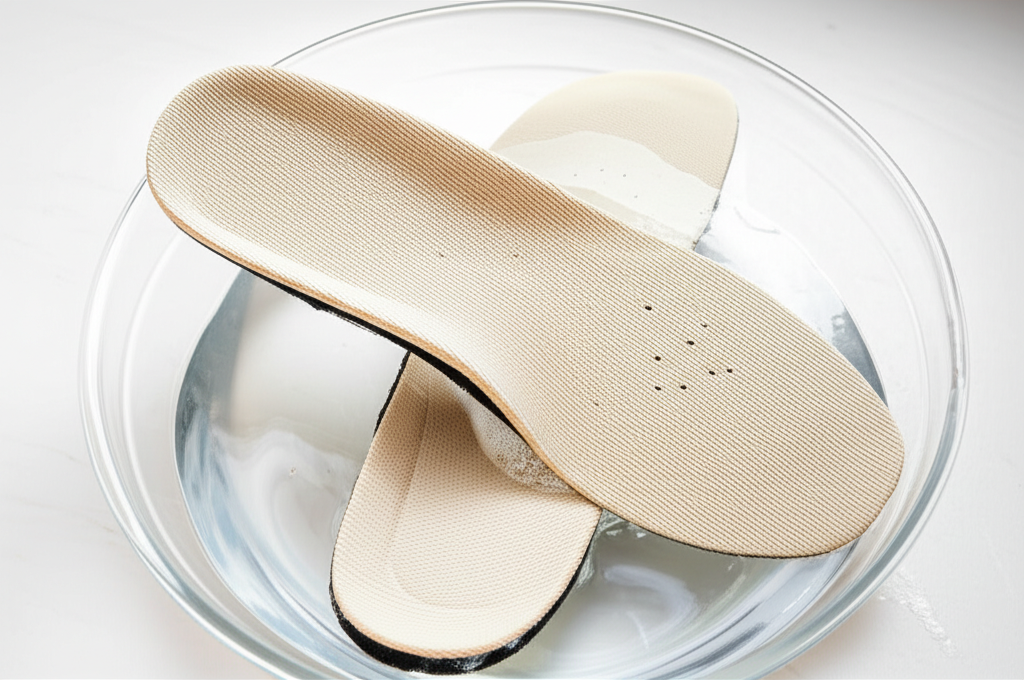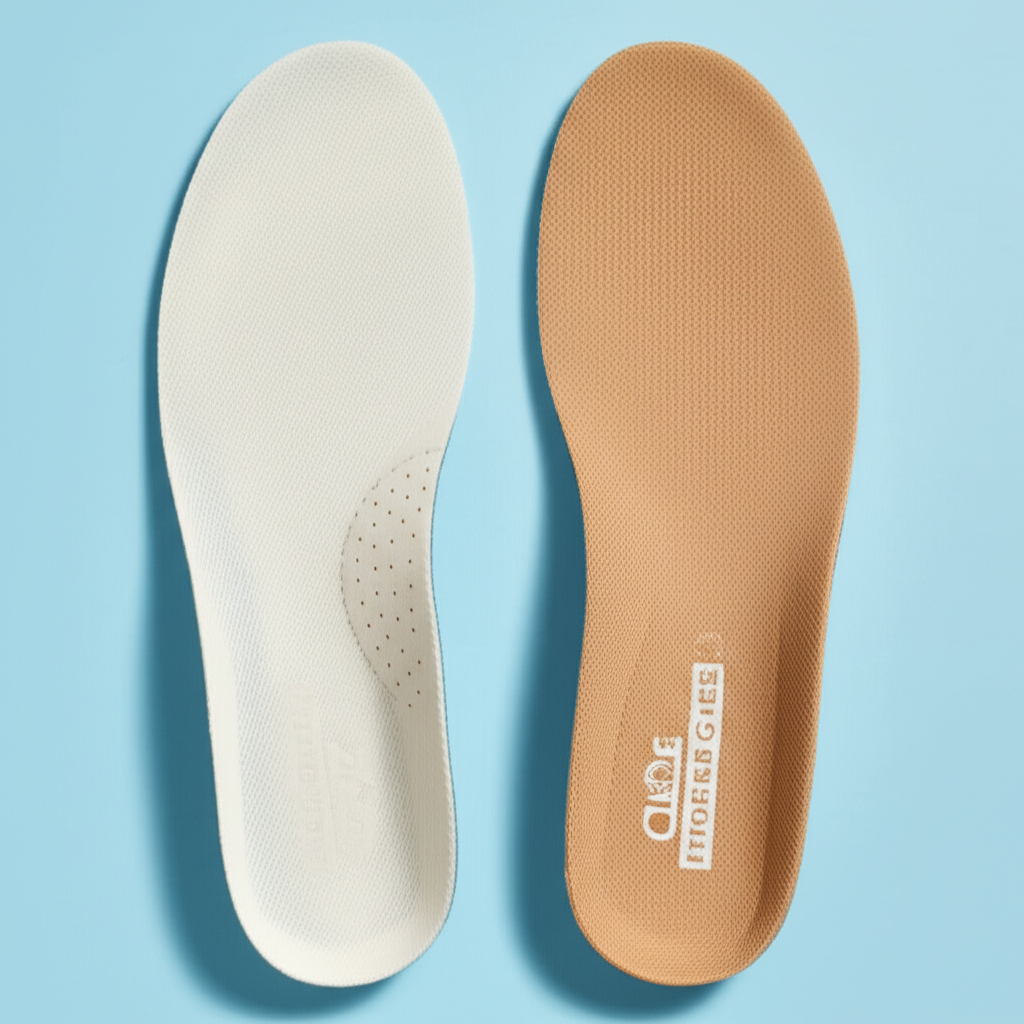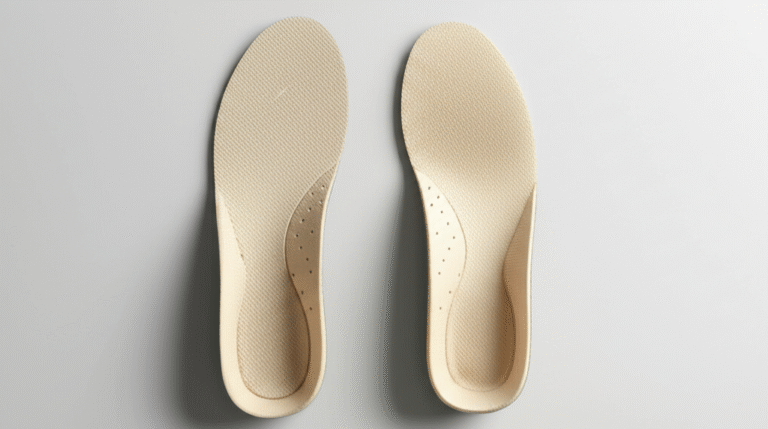Wondering how to clean shoe insoles effectively? This effortless guide shows you how to tackle dirt, odors, and stains on your shoe insoles using simple methods and common household items, restoring freshness and comfort to your favorite footwear.
Key Takeaways
- Remove insoles for thorough cleaning.
- Use mild soap and water for most insoles.
- Air dry insoles completely to prevent odors.
- Deodorize insoles with baking soda or sprays.
- Address stubborn stains with targeted cleaning.
- Replace worn-out insoles for better support.
How to Clean Shoe Insoles: An Effortless Guide for Freshness and Comfort
Are your shoes starting to smell less than fresh? Do your insoles look a bit grimy after a long day? You’re not alone. Many of us focus on cleaning the outside of our shoes, forgetting about the part that directly touches our feet – the insoles. Dirty or smelly insoles can make even the most stylish shoes feel uncomfortable and unappealing. It can be confusing to know where to start, especially with different materials involved. But don’t worry! This guide will walk you through simple, step-by-step methods to clean your shoe insoles, making them smell great and feel like new again. Get ready to give your feet the comfort they deserve.
Why Cleaning Shoe Insoles Matters

Think about it: your insoles are the unsung heroes of your footwear. They provide cushioning, support, and help wick away moisture. Over time, sweat, dirt, and dead skin cells build up, creating a breeding ground for bacteria and leading to unpleasant odors. Beyond just smell, this buildup can affect the feel of your shoes and even contribute to foot health issues. Regularly cleaning your insoles helps:
- Eliminate Odors: This is the most obvious benefit. Fresh insoles mean fresh shoes.
- Improve Hygiene: Removing bacteria and dirt promotes better foot health.
- Extend Shoe Lifespan: Clean insoles prevent material breakdown caused by sweat and grime.
- Enhance Comfort: Clean, dry insoles provide optimal cushioning and support.
- Maintain Appearance: Grimy insoles can peek out and detract from your shoe’s look.
Understanding how to clean them properly ensures you get the most out of your footwear investment.
Gathering Your Cleaning Supplies
Before you begin, having the right tools makes the process much smoother. You likely have most of these items already at home. For effective cleaning, gather the following:
- Mild Soap or Detergent: Gentle liquid hand soap, dish soap, or a specialized shoe cleaner works well. Avoid harsh chemicals.
- Lukewarm Water: Not too hot, not too cold.
- Soft Brush: An old toothbrush or a soft-bristled cleaning brush is perfect.
- Clean Cloths: Microfiber cloths are excellent for gentle wiping and drying.
- Baking Soda: A natural deodorizer and gentle abrasive.
- Optional: White Vinegar: For stubborn odors or disinfectant properties (use sparingly and dilute).
- Optional: Shoe Deodorizer Spray: For a quick refresh.
Having these on hand means you’re ready to tackle dirty insoles whenever they need attention.
Step-by-Step Guide: How to Clean Shoe Insoles

Cleaning your shoe insoles is a straightforward process. The best approach depends slightly on the material, but the core steps remain similar. Always start by removing the insoles from your shoes. This allows for better access and ensures the shoe itself doesn’t get excessively wet.
Step 1: Remove the Insoles
Gently pull the insoles out of your shoes. Most insoles are removable. If yours are glued in, you may need to spot-clean them while they’re in the shoe, being careful not to saturate the shoe lining. For removable insoles, set them aside.
Step 2: Prepare Your Cleaning Solution
In a small bowl or sink, mix a few drops of mild soap with lukewarm water. You want a lightly sudsy solution, not an abundance of foam. If you’re dealing with particularly stubborn odors, you can add a tablespoon of white vinegar to the water, but always dilute it. For very delicate materials, sometimes just plain water and a gentle scrub are enough.
Step 3: Gently Scrub the Insoles
Dip your soft brush into the cleaning solution. Gently scrub the surface of the insoles, paying attention to any visible dirt, stains, or heavily worn areas. Work in small, circular motions. Don’t scrub too aggressively, as this can damage the material, especially with foam or fabric insoles.
Step 4: Rinse Thoroughly
Rinse the insoles under cool, running water. Ensure all soap residue is washed away. Leftover soap can cause irritation or make the insoles slippery. You can also use a damp cloth to wipe away the soap if you prefer not to rinse directly.
Step 5: Absorb Excess Water
Press the insoles gently between clean, dry cloths to absorb as much moisture as possible. Avoid wringing them out, as this can deform the shape of the insole.
Step 6: Air Dry Completely
This is a crucial step. Place the insoles on a flat surface in a well-ventilated area, away from direct sunlight or heat sources (like radiators or dryers), which can damage the materials or cause them to shrink. Allow them to air dry completely. This can take anywhere from a few hours to a full day or more, depending on humidity and the insole’s thickness. Never put insoles in a washing machine or dryer unless the manufacturer specifically states it’s safe.
Step 7: Deodorize (If Necessary)
Once the insoles are dry, if they still carry an odor, sprinkle a thin layer of baking soda over them and let it sit for a few hours or overnight. Then, tap or brush off the excess baking soda. Alternatively, you can use a specialized shoe deodorizer spray. For a quick fix between washes, you can also place a dry tea bag or a small sachet of dried herbs like lavender inside your shoes overnight.
This comprehensive approach ensures your insoles are not only clean but also fresh and odor-free, ready to go back into your shoes.
Cleaning Different Types of Shoe Insoles
While the basic method works for most insoles, some materials require a bit more care. Here’s a quick guide for common types:
Fabric and Foam Insoles (e.g., Athletic Shoes, Casual Sneakers)
These are generally the easiest to clean. The mild soap and water method described above is ideal. Be gentle with the scrubbing to avoid tearing the fabric or compressing the foam permanently.
Leather Insoles
Leather insoles need a gentler approach to preserve the material. Use a slightly damp cloth with a tiny amount of mild soap. Wipe them down, then immediately wipe with a clean, damp cloth to remove soap. After drying, you can apply a small amount of leather conditioner to keep them supple. Never soak leather insoles.
Orthotic or Specialized Insoles
If you have custom orthotics or specialized insoles for medical reasons, always check the manufacturer’s cleaning instructions first. Often, they can be cleaned with mild soap and water, but harsh scrubbing or heat can damage their supportive structure. If in doubt, consult your podiatrist or the insole manufacturer.
Cork Insoles
Cork is a natural material that can absorb moisture and odors. Clean cork insoles by wiping them with a damp cloth and a very mild soap. Avoid over-wetting the cork, as it can degrade. For odors, a light dusting of baking soda can help. Ensure they dry thoroughly.
Understanding the material helps you choose the best cleaning method to avoid damage and ensure longevity.
Dealing with Stubborn Stains and Odors
Sometimes, standard cleaning isn’t enough. For tougher challenges, you might need a bit more firepower:
For Stains:
- Pre-treatment: For specific spots, apply a small amount of stain remover (designed for fabrics, if applicable) directly to the stain and let it sit for a few minutes before proceeding with the regular cleaning steps.
- Baking Soda Paste: Mix baking soda with a little water to form a paste. Apply it to the stain, let it dry, and then brush it off. This can help lift dirt and some discoloration.
For Persistent Odors:
- Vinegar Soak (Diluted): For very strong odors, you can soak the insoles in a diluted white vinegar solution (1 part vinegar to 4 parts water) for about 30 minutes, then rinse thoroughly and air dry. Vinegar is a natural disinfectant and odor neutralizer.
- Activated Charcoal Inserts: These can be placed inside shoes or insoles to absorb moisture and odors.
- Sunlight Exposure: On a dry, sunny day, place your insoles (not in direct, harsh sun that could degrade materials) near an open window. UV rays can help kill odor-causing bacteria.
Remember to always test any new cleaning method on an inconspicuous area first to ensure it doesn’t damage the insole material.
When to Replace Your Shoe Insoles
Even with diligent cleaning, insoles don’t last forever. If you notice any of the following signs, it’s time to consider replacing them:
- Significant Wear and Tear: Visible thinning, holes, or the material breaking down.
- Loss of Cushioning: The insoles no longer provide the same level of comfort or support.
- Persistent Odors: Despite thorough cleaning and deodorizing efforts, the smell remains.
- Discomfort or Pain: You start experiencing foot pain, arch discomfort, or blisters.
- Visible Cracks or Deformations: The insoles no longer lie flat or have significant cracks.
Replacing worn-out insoles is crucial for maintaining foot health and comfort. Good quality insoles can be found at most shoe stores or online. For custom needs, consult a professional.
Pro Tips for Sparkling Insoles
Want to go the extra mile? Here are some insider tips from the shoe care pros:
- Rotate Your Insoles: If you have multiple pairs of shoes you wear regularly, consider having a spare set of insoles. Rotating them allows each pair to dry out completely between uses, significantly reducing odor buildup.
- Wipe Down Daily: After a particularly sweaty day, give your insoles a quick wipe with a dry cloth or even a lightly damp one. This removes surface moisture and dirt before it has a chance to set in.
- Use Shoe Trees: Cedar shoe trees not only help shoes maintain their shape but also absorb moisture and impart a pleasant scent, which can indirectly help keep insoles fresher.
- Don’t Forget the Shoes: While cleaning insoles is vital, remember to clean the inside of your shoes too. A quick wipe with a damp cloth or a spray of disinfectant can make a big difference.
Small, consistent efforts can lead to a big impact on the freshness and longevity of your footwear.
Frequently Asked Questions (FAQ)
Q1: Can I machine wash my shoe insoles?
Generally, no. Most shoe insoles, especially those made of foam, gel, or specialized materials, can be damaged by the agitation and heat of a washing machine or dryer. Always check the manufacturer’s label. Hand washing with mild soap and water is the safest method.
Q2: How often should I clean my shoe insoles?
This depends on how often you wear the shoes and how much you sweat. For athletic shoes or everyday sneakers, cleaning them every 1-2 months is a good starting point. If you notice odor or visible dirt, clean them sooner.
Q3: My insoles still smell after washing. What else can I do?
Try the baking soda method (sprinkle generously, let sit overnight, then brush off) or a diluted white vinegar soak. Ensure the insoles are completely dry before putting them back in shoes. Sunlight can also help kill odor-causing bacteria. If the smell persists, the insoles might need replacing.
Q4: Can I use bleach to clean my insoles?
It’s best to avoid bleach. Bleach is a harsh chemical that can degrade materials, fade colors, and damage the structure of many insoles. Stick to mild soaps or specialized shoe cleaners.
Q5: My insoles are starting to flatten. Can cleaning help?
Cleaning can remove dirt that might be causing some stiffness, but if the insole material itself has lost its resilience, cleaning won’t restore its original cushioning. In this case, it’s time to consider replacing the insoles for proper support.
Q6: How do I clean insoles that are glued into my shoes?
If insoles are not removable, you’ll need to clean them in place. Lightly dampen a cloth with mild soap and water. Gently scrub the insole surface, then use a separate damp cloth to wipe away soap residue. Be careful not to get the shoe’s interior too wet. Allow the shoe to air dry completely with the tongue pulled out.
Q7: Are there any natural cleaning alternatives for insoles?
Yes, baking soda and diluted white vinegar are excellent natural options for cleaning and deodorizing. For very light cleaning, you can often get away with just dampening a cloth and wiping them down.
Conclusion
Keeping your shoe insoles clean and fresh is an essential part of good shoe care. It’s not a complicated process, and with a few simple supplies and a little bit of your time, you can significantly improve the comfort, hygiene, and longevity of your favorite footwear. By following these steps, you can banish odors, tackle stains, and ensure your feet feel great every time you slip on your shoes. Remember to always consider the material of your insoles and adjust your cleaning method accordingly. Don’t let dirty insoles ruin your shoes – embrace these effortless cleaning techniques and enjoy fresh, comfortable footwear!

